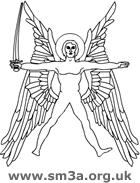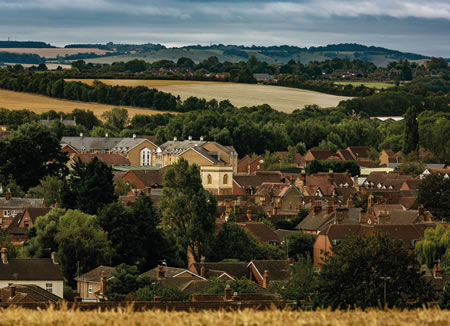
This guided walk, designed to be followed using a mobile phone or tablet, starts and ends at St Michael's Church, so why not check out our What's On page and time your walk to coincide with one of our cafés so that you can enjoy some quality refreshment and great company at the start or end of your walk (or both!)?
Shefford has three rivers, the remains of a canal and many 'green' spaces. This walk will take about 45 minutes. It involves some steps and in damp/wet weather sturdy footwear is advised.
Turn right out of St Michael's Church and ahead you wil see...
1. The White Hart - Early 17th Century
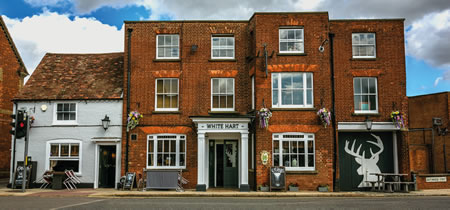
Grade II listed, it served as a coaching/post inn, excise office and collection point for mail, especially for the Priory at Chicksands. Attached, now part of, The White Hart is Plait House. Plaiting straw was a local cottage industry and this building was used as an auction house for selling the plaits to Luton hat and bonnet makers.
At the traffic lights turn left into Northbridge street. Notice the replica water pump.
2. The Porch - Grade II Listed
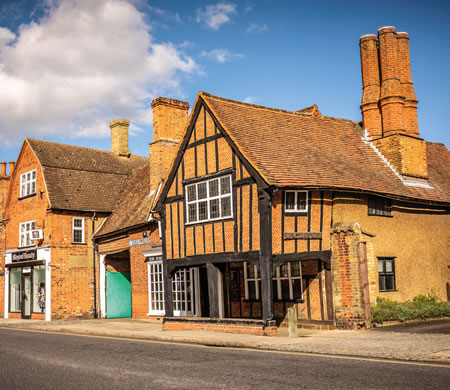
A good example of Tudor brickwork, with exposed timbers and a tiled roof. It was formerly the Cock Inn, Shefford's oldest inn.
In the 17th Century it was used to hold the Assizes Petty Sessions.
3. No.8 Northbridge Street
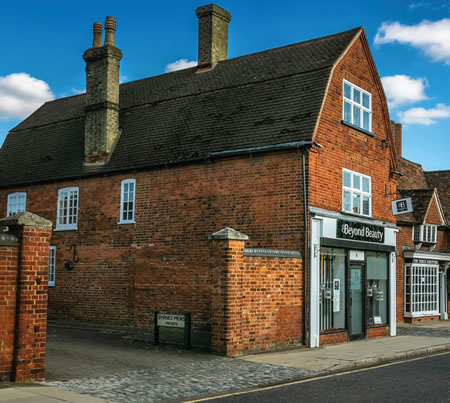
This building has an interesting style of roof, know as Mansard, French or Gambrel.
4. Robert Bloomfield's House
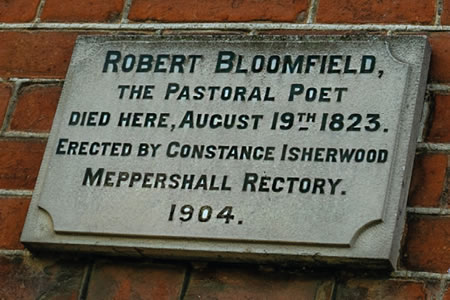
No.s 17 and 18 Northbridge street were once the home of Shefford's famous poet, Robert Bloomfield. His most famous work was 'The Farmer's Boy' which sold over 26,000 copies.
He was born in Bury St Edmunds in 1766 and came to live in Shefford in 1799 where he lived until his death in 1823.
His grave is in Campton churchyard and his name is perpetuated by the Robert Bloomfield Academy.
5. The Old Jubilee Fire Station
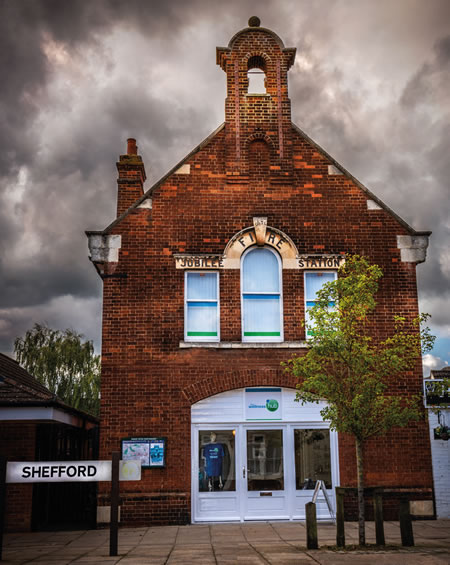
Currently in use as a Wellness Centre, this was Shefford's 2nd Fire Station (the first was attached to the front of St Michael's Church). It was built around 1887 to celebrate the Golden Jubilee of Queen Victoria.
6. River Flit Bridge
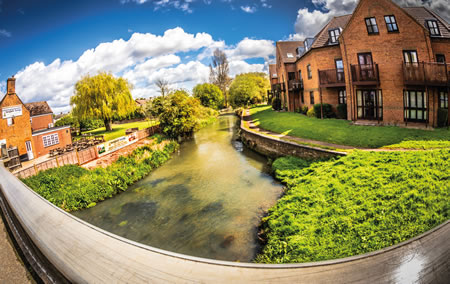
Continue to the River Flit Bridge and turn right along the riverside footpath. This was the terminus of the Ivel Navigation Canal (the recently restored Wharf wall is the most visible artefact of our canal).
The first phase of the Ivel Navigation opened in 1758 and ran from Tempsford to Biggleswade. At Tempsford it joined the Great Ouse, linking through to the major Wash port of King's Lynn.
In 1823 it was extended to Shefford, mainly to bring timber, coal and grain from King's Lynn for the lucrative market of Hitchin. The roads in the area at that time were pretty dire by all accounts.
Starting in 1850, the Great Northern and Midland railways quickly made the Ivel Navigation uneconomical, and on 13th July 1876 an abandonment Act for the Ivel Navigation received royal assent.
Follow the path to where the River Flit joins with the River Hit to become the River Ivel, cross over the footbridge and turn left.
The nature of the Ivel meant that the Shefford section of the canal had to be dug out for most of its length through to Biggleswade and required five locks (expensive). As you walk along the path the River Ivel is on your left and the ditch to your right is the remains of the old canal cut.
7. Old Windmill
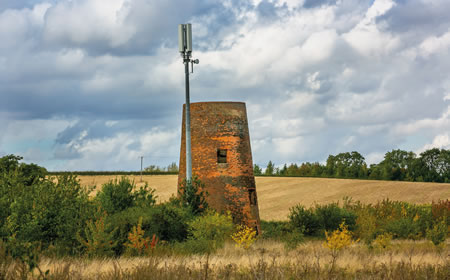
As you continue along the path you can clearly see the Old Windmill to your left. There has been a mill on this site since the 16th Century, Originally there was a water mill, but that was destroyed by a flood in 1959, and the brick windmill had its copper dome stripped for the Great War effort.
8. Millennium Green
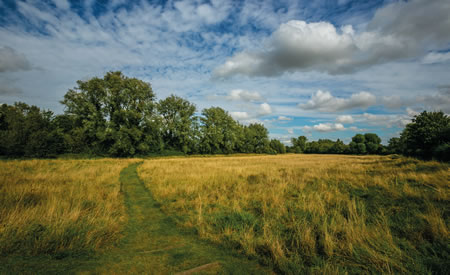
Either cross the bridge on your right and take a turn around Millennium Green, or continue to the junction in the path and enter Millennium Green at the far end.
This green space, along with many others in the town, is maintained by the P3 group (People, Projects, Partnership).
9. Five-Arch Stone Bridge
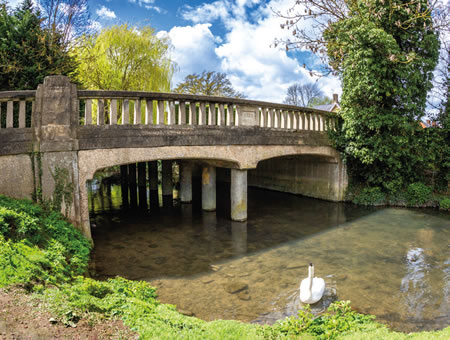
Leave Millennium Green, retracing your steps along the footpath, but rather than crossing the footbridge, continue along the path to Southbridge Street.
Notice the 1935 memorial tablet on the five-arch stone bridge.
10. PI House
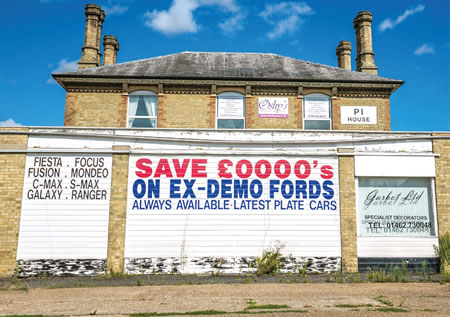
Turn left along Clifton Road.
Almost immediately on your right is Shefford's current Fire Station, and opposite it, on Ivel Road is a long low building which was the Shefford Brewery.
A hundred yards on the left along Clifton Road is PI House, which is a Georgian building, the beauty of which is sadly hidden by a more recent single-storey extension. Still visible from the road however are the first floor windows, four impressive chimneys and a slate tiled hip roof. The bricks are 'Arlesy Whites' from the local Arlesy brickworks.
Heading back into town you pass Ivel House, behind which used to be the town's blacksmith and farrier. As you walk back, the area opposite the Post Office, known as Kingsmead, used to be a tannery yard when learther was an important industry in Shefford. Turn left at the traffic lights, and you are back at St Michael's Church.
Acknowledgements and thanks to:
John Burgess MA, Tony Dawson, The Shefford History Group, and to Karen Brammer (photography).

This online guided walk has been made possible by the generous support of the Heritage Lottery Fund.
Source: Stephen Lines
Published 9th November 2019
